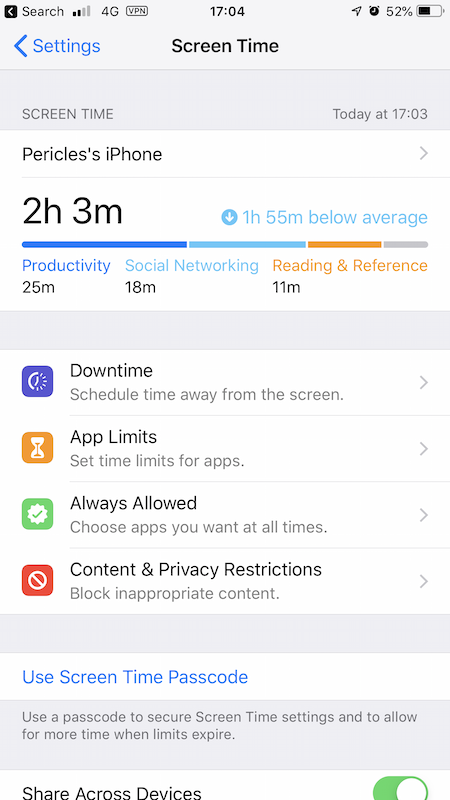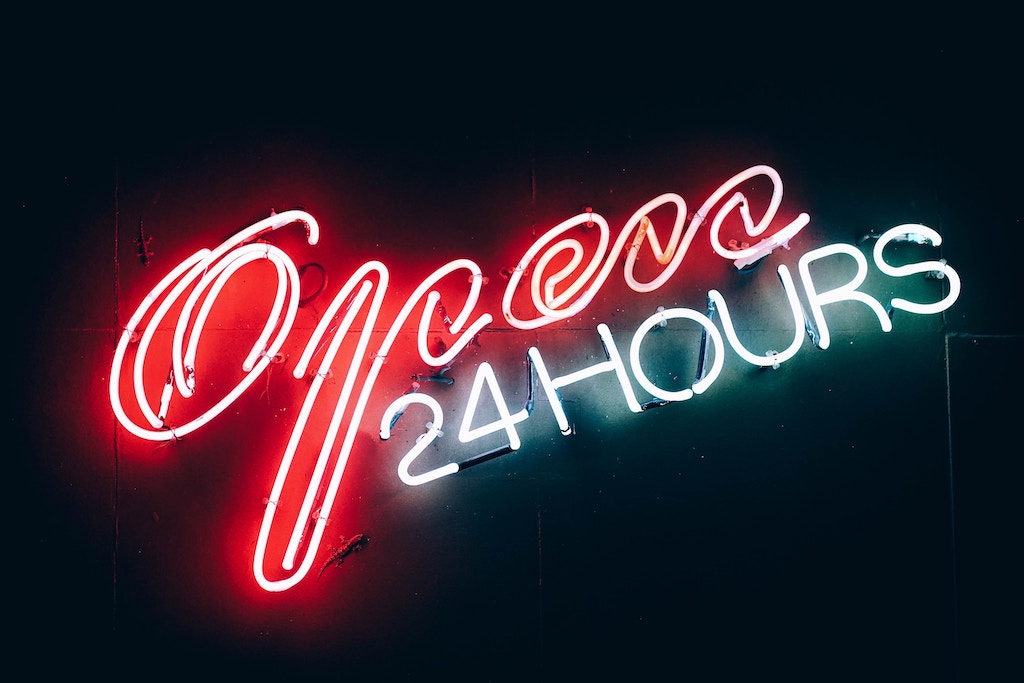I share my passion for technology and products. Senior Engineer @intercom.
I share my passion for technology and products. Senior Engineer @intercom.
26 March 2019

The toll social media can take on people is well documented and I was no exception. Earlier this year, I found myself jumping constantly between social networking apps with the hope that there is new content for me to digest. I would exhibit this kind of behaviour during my free time or when I had time to spare. This had an interesting side-effect: I would validate my addiction since it didn’t interfere with work. The boiling point for me was when I started associating social media with my cool down periods or rather my the signal for me to start relaxing. In the meanwhile, my Trello board of books to read kept pilling on.
You will often hear people say, “She is on her phone all the time” but actually how much time is all the time? For the person in question, as bad as it sounds, the line is a bit blurred. Part of the social media is some human interaction in the form of replies, reactions or comments. How is that different from phoning your parents or emailing a friend? However, the time spent socialising let’s say is only a fraction of the amount spend conusming all that content.
With the release of iOS 12, Apple introduced Screen Time. Screen Time allows you to track your how much time you spend on social media. Moreover, it gives you granular control on setting the max time you can spend on each app. It’s smart enough to associate mobile apps with websites so time spent through either medium is counted towards your set goal.

I practically only use three social media apps: Twitter, Instagram, and Linkedin.
I set a max of 30 minutes on each one of them. The results were quite interesting. During the week, I was able to stick to the 30 minutes limit. However, the weekend was a different story. Instgram was by far the app I kept extending the time of (this is a feature of Screen Time) with Twitter close second. Linkedin was still under 30 minutes. This doesn’t mean Linkedin was perfect, far from it. I will touch on it a bit later.
The most fascinating discovery though, was that YouTube topped the list and I didn’t even consider it as part of my social networking options. I would spend so much time jumping from recommendation to recommendation. I wish I could say those were productive videos instead of sports commentary and silly clips.
Measuring and visualing the time spent was a wake up call for me. I needed to reduce dramatically how much time I spend on those 4 apps. More importantly though I had to shift my mentality.

In my case, there were a couple of contributing factors but two stood out: fear of missing out (FOMO) and the obsession of right now.
In a world where everything has become breaking news, missing out on a tweet or piece of information feels like hubris. What if x person tweeted an amazing article about y and I miss it? What if someone mentions how they got a 200% pay rise and I’m not able to favourite? How cool will it be if I am the first to post on Slack that funny tweet that makes fun of Javascript? (probably). As silly as they sound to me now, they used to be the thoughts that were driving to Twitter every 5 minutes. Instagram more or less the same. What if someone posts an awesome picture? I need to see it now!
Notifications, specifically the ill intended ones, are the root of all evil in my opinion. In order to satisfy some vanity metric around the time you spend on their products, companies are bombarding users with useless notifications. Skip them at your peril. Wouldn’t you want to know how many times your picture was liked or retweeted? Besides the fact that those type of notifications provide no actionable information, they are targeting you in the name of right now. You might think there are some that require your attention straight away. Honestly I struggle to find a single one nowadays.
None of the notifications above in a vacuum are harmful right? You can choose to respond or not. Companies have long decided that a small nudge will have you back on their app. And while you are there, why not just browse the story that your colleague just posted? I’m sure her dog is sooooo pretty. And those avocados are irresistible.
Nothing and I mean nothing is worth your attention right now. So what if you miss a tweet about a new language feature? If it is important enough, the Gods of internet will not adandon you; in one form another, that crucial piece of information will come and find you.
The first thing I did was to delete all mobile apps from my phone. No more annoying push notifications. With that, the convenience of simply clicking on an icon on my phone went away.
Secondly, and this is convenient for me because I use icognito by default on my phone, I will only access those sites in icognito mode. Which means I’m not auto-signed in. Which means I have to type my email and password. And since I have 2FA, I have to go through that step as well. This small barrier has made all the difference in the world. I cannot be asked now to go through these loops just to randomly browse my social media feeds.
Both steps have helped me regain my sanity and time from social media. I now browse social media 2 or 3 times a day spending no more than 1 minute on each login. Nothing is worth your attention right now.